I am shocked by how many ficus plants I’ve owned, given my track record with them. I’ve had several plants in this genus: two ficus lyrata, a ficus benjamina, and of course, two ficus elastica. These are fig plants, but the edible common fig, ficus carica, isn’t your ideal houseplant — it really prefers being outdoors.
My experience with ficus houseplants has been emotionally taxing, to say the very least — the rapid leaf drop, come wintertime, is soul-crushing. That said, ficus plants are absolutely gorgeous. I don’t care how many times a fiddle-leaf fig betrays me. I’ll buy one if there’s a good deal, and I shamelessly do photoshoots of it for my IG.
HOWEVER, one species that has been quite agreeable during my houseplant journey is the ficus elastica, aka, the rubber plant. Yes, every influencer and their mother has this sleek, versatile houseplant lurking in their photos and videos. And honestly, I don’t blame them or the algorithm because the rubber plant is breathtakingly beautiful with its fleshy leaves and deep color. The gloss on a fresh, unfurling leaf is pure serotonin for me.
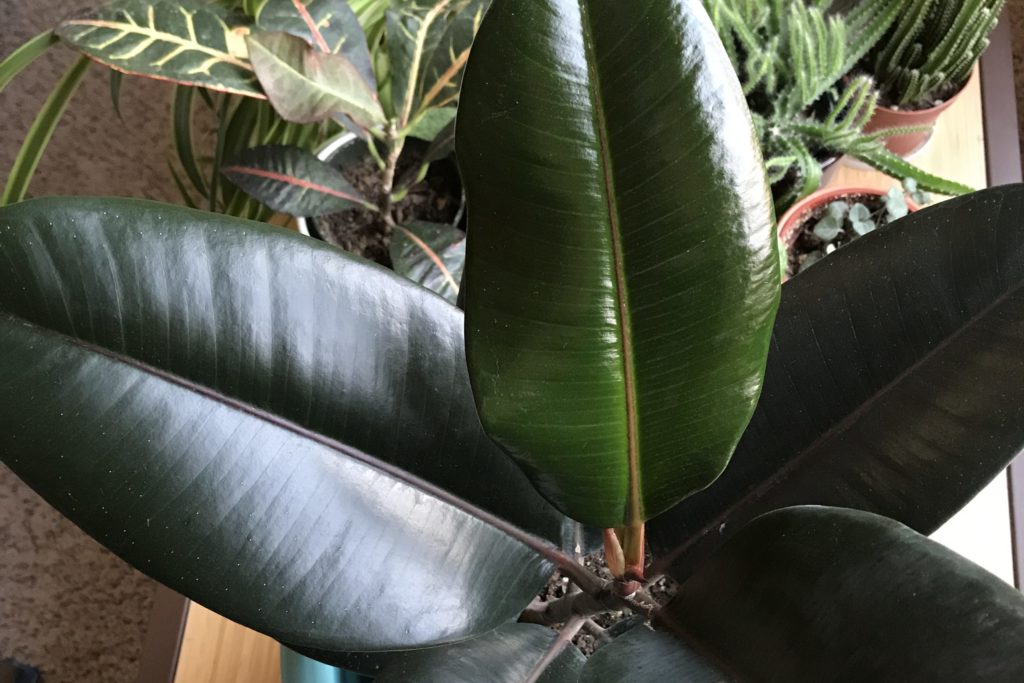
And besides its striking foliage, this plant is incredibly easy to care for. I’ve had trouble with the ZZ plant, but the ficus elastica has never acted out when I ignore it. Still, like with every other houseplant, there’s a baseline level of care that it likes to really thrive.
Rubber Plant Characteristics
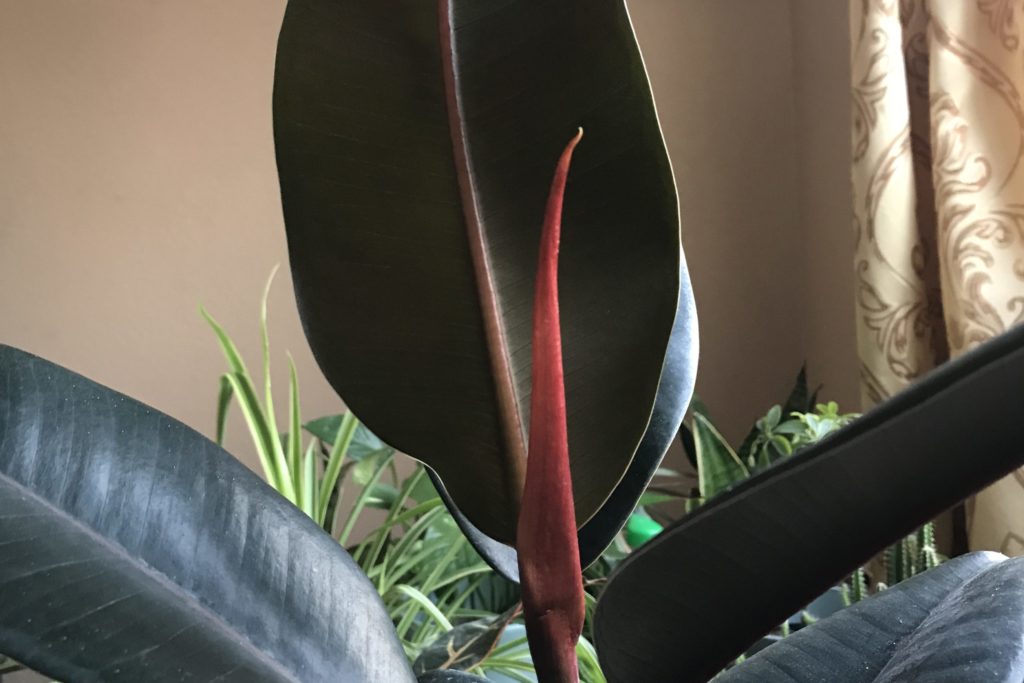
Native to India and Malaysia, the ficus elastica can easily be identified with its glossy and leathery oval-shaped leaves that range between 3.5 to 12 inches long. It’ll grow between two to 10 feet tall in homes and up to 100 feet tall in nature. Out in the jungle, you’ll also find this plant with fruits and flowers — this is much less common in houseplants.
The ficus elastica comes in quite a few varieties. Some you might commonly find at your local nursery include:
- Ficus elastica burgundy: glossy purple-green (almost black) leaves with a burgundy tint and red midrib
- Ficus elastica ruby: dark green leaves with pink, white, red, and purple coloring
- Ficus elastica doescherii: medium green leaves (with splashes of cream and gray) with creamy edges
- Ficus elastica robusta tineke: dark green leaves with creamy edges
I have two rubber plants in my collection right now: a ficus elastica burgundy and a variegated ficus elastica ruby. They’re definitely more commonplace around the autumn, so if you’re snooping around for good deals under $15, it’s worth checking out your grocery store or a big-box store around September!
Rubber Plant Care
Where to begin with rubber plant care? It’s pretty intuitive. Give your plant indirect sunlight and keep it at room temperature. The ficus elastica is also hardy in low light and cold conditions (as long as it’s above 55 degrees) as well. It appreciates moderate humidity and watering. In the summer, I’ll go a little wild and fertilize every week, which my ruby rubber plant loves, for the most part anyway. The amount of water and fertilizer you give your plant really depends on how much light it gets. If it gets a lot of light, you’ll want to water and fertilize more. The rubber plant isn’t picky when it comes to soil, so a peat-based potting mix should suffice. You can mix in perlite and sand for better drainage.
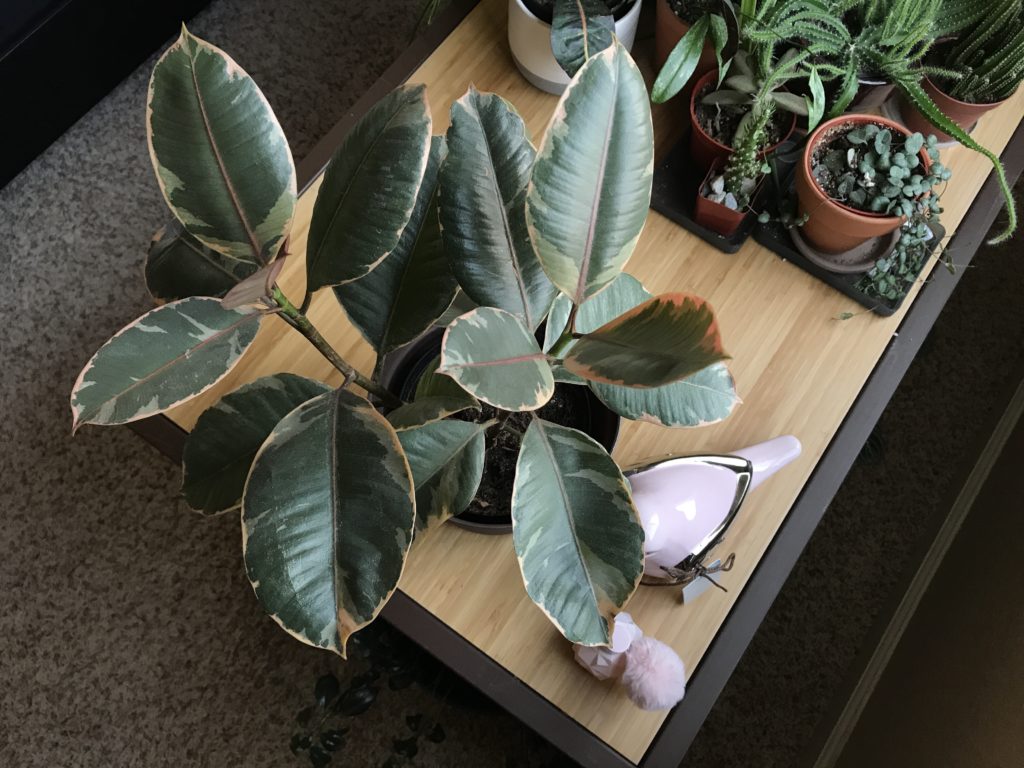
Also, be sure to wipe the leaves every so often. A damp cloth should do, so you won’t need anything fancy. Clean, dust-free leaves will help your houseplant conduct photosynthesis more efficiently so that it will grow faster!
Do be careful around your rubber plant, especially if you’re pruning it back or trying to propagate it. When you cut it, you might notice white latex oozing out — the milky white sap is why the plant is called a rubber fig tree, or a ficus elastica. This substance is definitely an irritant for your skin and eyes. It goes without saying, but…don’t ingest it. And don’t let your kids or pets ingest it, either. Wear gloves and wash your hands thoroughly when handling with the sap.
Rubber Plant Troubleshooting
The ficus elastica is very steely, but you definitely don’t want to leave this plant in any extreme conditions — it’ll wilt in very hot temperatures and drop leaves when left by drafty windows. Bottom leaf drop is normal, especially with older plants. Overwatering may also be a culprit, as it leads to root rot, which is signaled by yellow and dropping leaves. During the colder months, it’s best to err on the side of underwatering. Don’t water your plant until the soil is completely dry.
If your plant is losing its coloring or the leaves look a little faded, you’ll want to give it more intense indirect light so that it maintains its variegation.
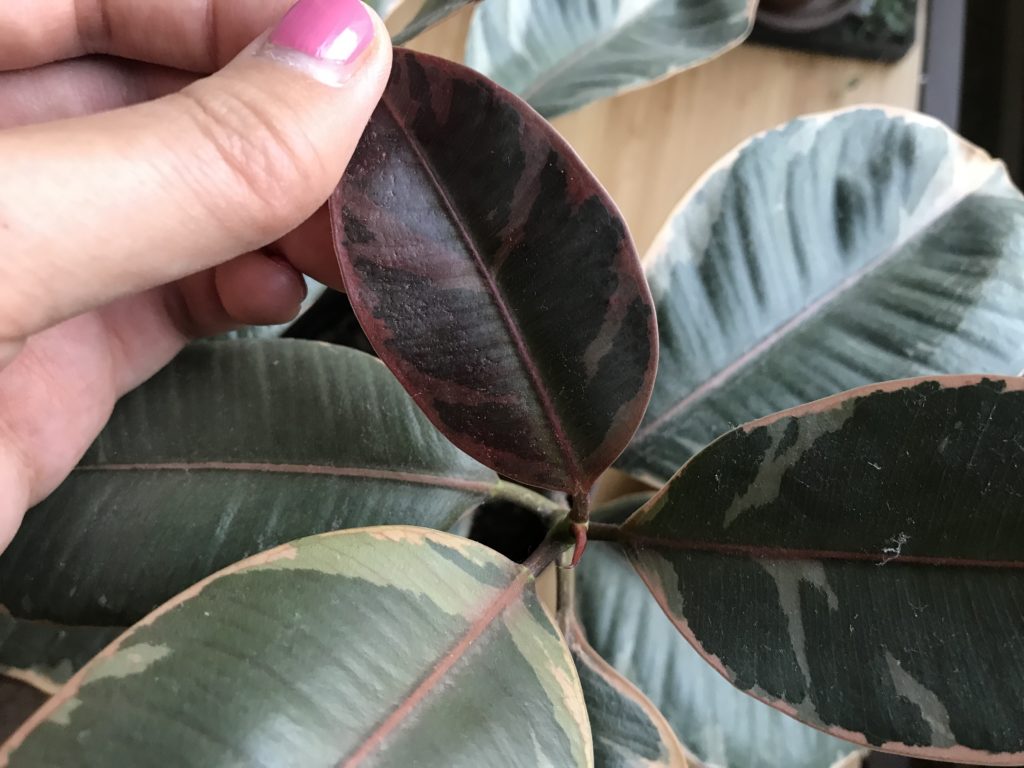
I haven’t gotten pests on my rubber plants, but I know that aphids, mealy bugs, scale, and spider mites are common. As with any pest situation, it’s good to spray down your plants with water, dab the pests with alcohol, and treat the leaves with neem oil!
So there you have it, folks, a basic care guide to the rubber plant. A little love goes a long way with this species, and unlike the others in its genus, the ficus elastica is less likely to break your heart.
Sources
- Reader’s Digest: Success With House Plants
- http://www.missouribotanicalgarden.org/PlantFinder/PlantFinderDetails.aspx?kempercode=b597
- https://plants.ces.ncsu.edu/plants/ficus-elastica/
- https://edis.ifas.ufl.edu/st252
- https://selectree.calpoly.edu/tree-detail/ficus-elastica
- http://www.costafarms.com/plants/ficus
- https://homeguides.sfgate.com/burgundy-rubber-plant-care-37259.html
- https://homeguides.sfgate.com/rubber-tree-plant-problems-62531.html
- https://www.cabi.org/isc/datasheet/24090
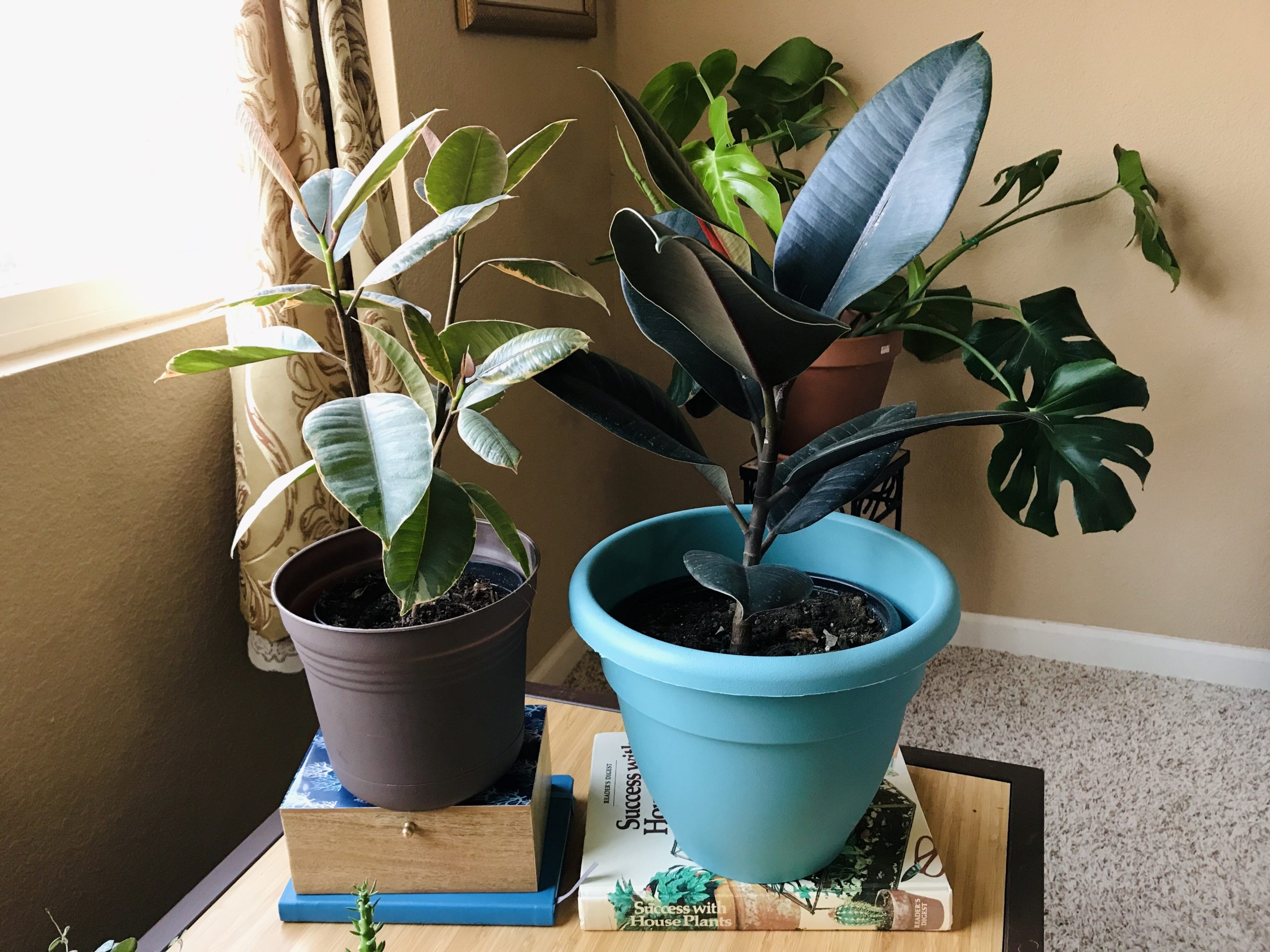
1 thought on “A Short and Simple Guide to Rubber Plants”